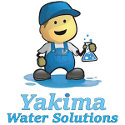Testing your water is the key to determining if you have bacteria and contaminates, how to solve your problem and what steps our Problem Water Specialists can take to protect your family, home or business.
- Chemical Free Solutions
- Ultraviolet Light Systems
- Well Water Disinfection Service
- Disinfection for Home Plumbing
Municipal Water Supply
To protect drinking water from disease-causing organisms, or pathogens, water suppliers often add a disinfectant, such as chlorine, to drinking water. However, disinfection practices can be complicated because certain microbial pathogens, such as Cryptosporidium, are highly resistant to traditional disinfection practices. Also, disinfectants themselves can react with naturally-occurring materials in the water to form byproducts, such as trihalomethanes and haloacetic acids, which may pose health risks.
A major challenge for water suppliers is how to control and limit the risks from pathogens and disinfection byproducts. It is important to provide protection from pathogens while simultaneously minimizing health risks to the population from disinfection byproducts.
If your local health department or a lab tested your water for bacteria, and If your Report shows a “P” next to either E.coli or Coliform Bacteria, that means there is the Presence of Bacteria & NO amount of this Bacteria is acceptable so the water MUST be treated to kill the bacteria to make it potable!
It’s very important to understand your municipal water quality. You can obtain a consumer confidence report (CCR) from your local municipality by contacting them. They are usually available for download or published yearly.
Boil Water Advisories
Rural & city-managed water supplies sometimes fail! Boil water advisories are becoming more common ~ the clean water we’ve taken for granted is becoming a scarce resource.
Private Well Water
If you rely on a private water supply – whether it’s a well, spring, lake, river, pond, or rainwater collection system – the quality of the water you and your family drink and use varies from day to day. Heavy rainfalls or melting snow can effect purity. Agricultural run-off and distant sources of contamination can leach into groundwater over time and contaminate water sources miles away. The simple fact is – water that has been safe at one time may not necessarily always be safe. 20% to 40% of wells are contaminated.
What are pathogens?
Inadequately treated water may contain disease-causing organisms, or pathogens. Pathogens include various types of bacteria, viruses, protozoan parasites, and other organisms.
How do pathogens and indicators get into my drinking water?
- The major source of Cryptosporidium, Giardia lamblia, and viruses in drinking water is human and animal fecal waste.
- Coliforms are naturally present in the in the environment. Fecal coliform and E. coli are only found in human and animal fecal waste.
- Legionella is found naturally in water and multiplies in hot water heating systems.
- A major source of turbidity in drinking water is soil runoff.
How Safe Is the Water You Drink?…and Brush Your Teeth with?…and Bathe In? Do you really know for sure? Is it always Safe even though it’s only been tested once, or infrequently?
The truth is that you don’t know unless you have your water tested and properly maintained water treatment equipment in place. Schedule a water analysis today and know your water quality.

